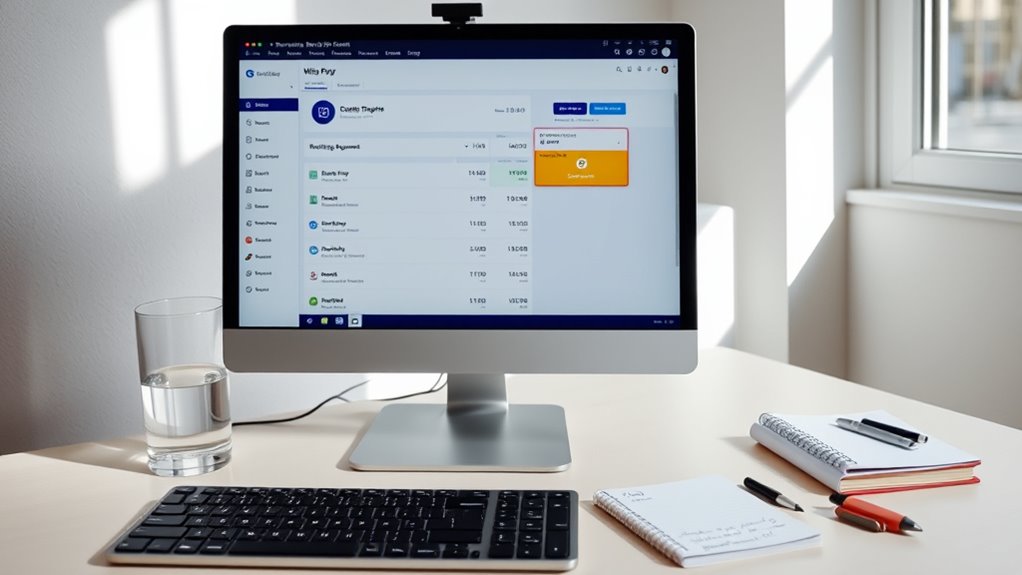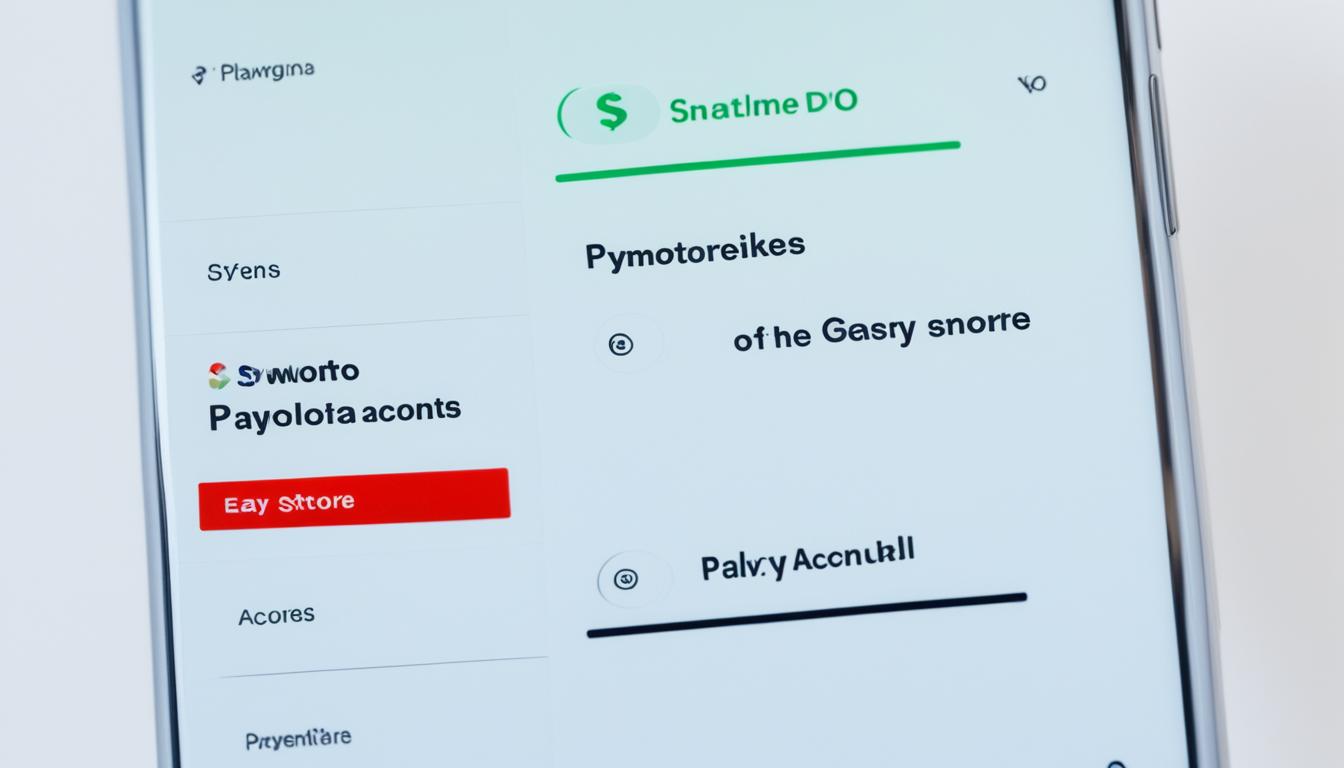To set up recurring payments for subscription billing, start by choosing a secure payment gateway that supports automatic billing. Then, define your billing cycle, specifying the payment frequency, start date, and amount. Input your payment details accurately and confirm the setup. Once active, regularly monitor your transactions and update information if needed. If you want to learn about managing and optimizing your recurring payments effectively, keep exploring the essentials.
Key Takeaways
- Choose a secure payment gateway that supports recurring billing features for seamless subscription management.
- Define your billing cycle, including payment frequency, start date, and amount, based on your subscription terms.
- Input accurate payment details and confirm the setup, ensuring all information is correct before activation.
- Automate payments by scheduling recurring transactions through your chosen gateway to ensure continuous service.
- Regularly monitor transactions and update payment information or billing cycles as needed to maintain accurate billing.

Setting up recurring payments can simplify your financial life by automating regular transactions like bills or subscriptions. When you choose to automate payments, you’re fundamentally telling your bank or payment system to handle these transactions on your behalf, saving you time and reducing the risk of missed payments. The process begins with selecting a reliable payment gateway that supports recurring billing. A payment gateway acts as the bridge between your bank and the merchant, securely transmitting payment information and ensuring your transactions are processed smoothly. Many gateways offer integrated features for managing subscription billing, making it easier to set up and oversee ongoing payments.
Once you’ve chosen a payment gateway, you’ll need to establish your billing cycles. Billing cycles define how often payments are deducted—monthly, quarterly, or annually—based on your preferences or the subscription terms. You typically input this information during setup, specifying the start date, frequency, and amount to be charged each cycle. It’s vital to clearly understand the subscription terms so that the billing cycles align with the actual service periods. For example, if you’re subscribing to a streaming service that bills monthly, your billing cycle should reflect that to avoid overcharging or service interruptions. Additionally, utilizing automated notifications can help you stay informed about upcoming payments and any potential issues.
Establish billing cycles matching your subscription terms to ensure seamless payments and service continuity.
Most payment gateways offer a user-friendly interface where you can input your payment details and set up the recurring schedule. You’ll need to provide your credit or debit card information, bank account details, or other payment methods accepted by the gateway. After entering your data, you’ll usually have the option to review and confirm your recurring payment setup. This step guarantees that all details are correct before activation. Many platforms also provide options to pause, modify, or cancel the recurring payments at any time, giving you flexibility to manage your subscriptions as needed.
It’s vital to keep track of your billing cycles and monitor your bank statements regularly to verify that payments are processed correctly. Some payment gateways send automatic notifications or receipts after each transaction, helping you stay informed about upcoming charges and ensuring there are no surprises. If you notice discrepancies or wish to change your subscription details, most gateways allow you to update your payment information or adjust your billing cycle through their dashboard. This ongoing management helps maintain control over your finances and ensures your subscriptions continue seamlessly.
Frequently Asked Questions
Can I Change the Billing Cycle After Setup?
Yes, you can change the billing cycle after setup. Most platforms allow billing cycle adjustments, so you can modify your subscription plan changes anytime. You simply need to access your account settings, select the subscription, and choose the new billing cycle that fits your needs. Keep in mind, some providers may have restrictions or require prorated adjustments, so review their policies before making the switch.
What Payment Methods Are Supported for Recurring Billing?
Your options are practically endless—you can choose from popular payment gateways like Stripe, PayPal, and Square to support your recurring billing needs. These gateways seamlessly integrate with various billing options, including credit cards, debit cards, and digital wallets. By offering flexible payment methods, you guarantee your subscribers can pay easily and securely, keeping your subscription business running smoothly and confidently, no matter which payment method they prefer.
How Do I Handle Failed or Declined Payments?
When a payment fails or gets declined, you should implement dunning management to notify your customer and attempt payment retries automatically. Set a schedule for retries and communicate clearly about the issue. If retries fail, consider offering alternative payment methods or reaching out personally. This proactive approach helps recover revenue, maintains customer relationships, and reduces churn. Always keep your customers informed and provide easy options to update their payment details.
Is There a Limit to the Number of Subscriptions?
Think of subscription caps as your safety net—there’s often a limit to how many subscriptions you can offer, depending on your platform or plan. You might encounter usage limits that restrict the number of active subscriptions or transactions. While some providers set strict caps, others offer flexible options. Keep an eye on these limits to guarantee you don’t accidentally drown in a sea of subscriptions, and always explore plans that grow with your needs.
How Secure Is the Recurring Payment Process?
Your recurring payment process is highly secure because it uses advanced security protocols and payment encryption. These measures protect your sensitive information during transactions, preventing unauthorized access. Payment encryption ensures your data stays confidential, while security protocols monitor for suspicious activity and verify transactions. Rest assured, these features work together to keep your payment details safe, giving you peace of mind whenever you set up or manage recurring payments.
Conclusion
Now that you’ve mastered setting up recurring payments, your bank account can relax while your subscription happily drains it month after month. No more awkward chats with customer service or forgotten payments—just smooth sailing and a steady cash flow. Just remember, the more you automate, the less you’ll remember what you actually signed up for. So sit back, enjoy the endless stream of charges, and pretend that you’re in control—because, really, who’s got the time?









